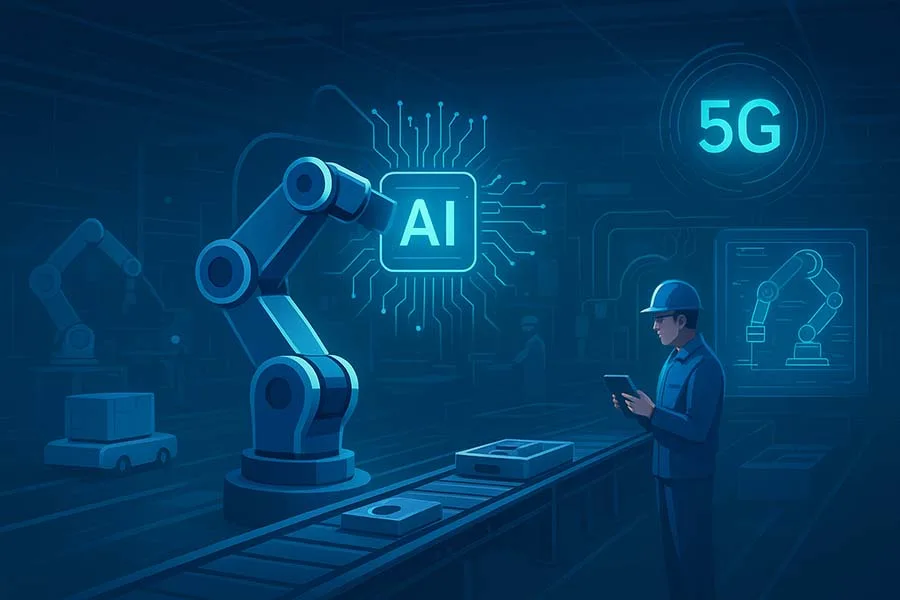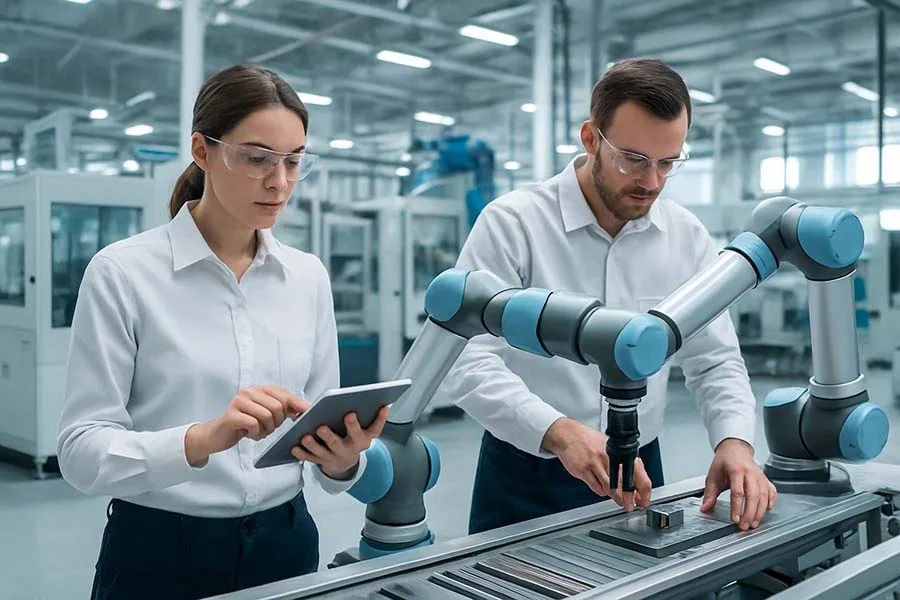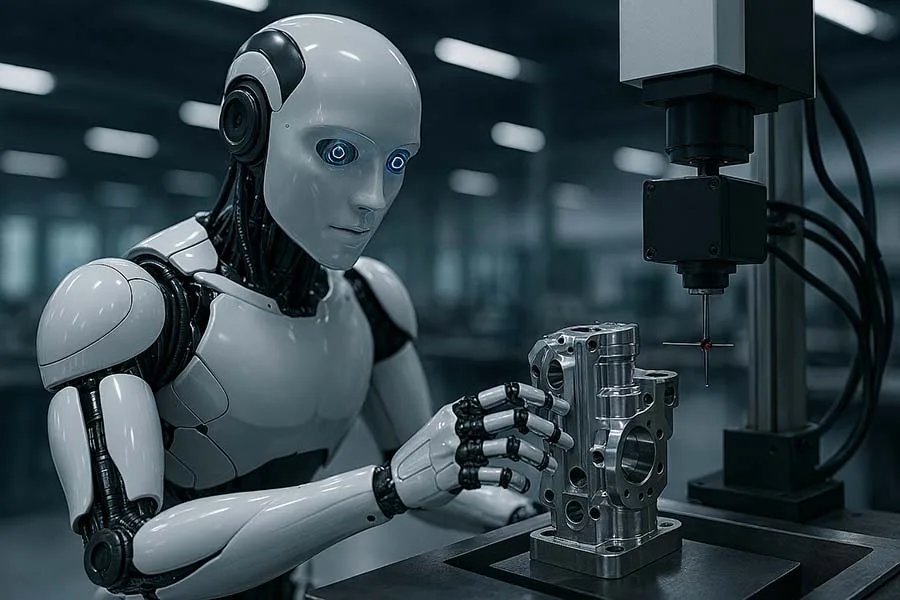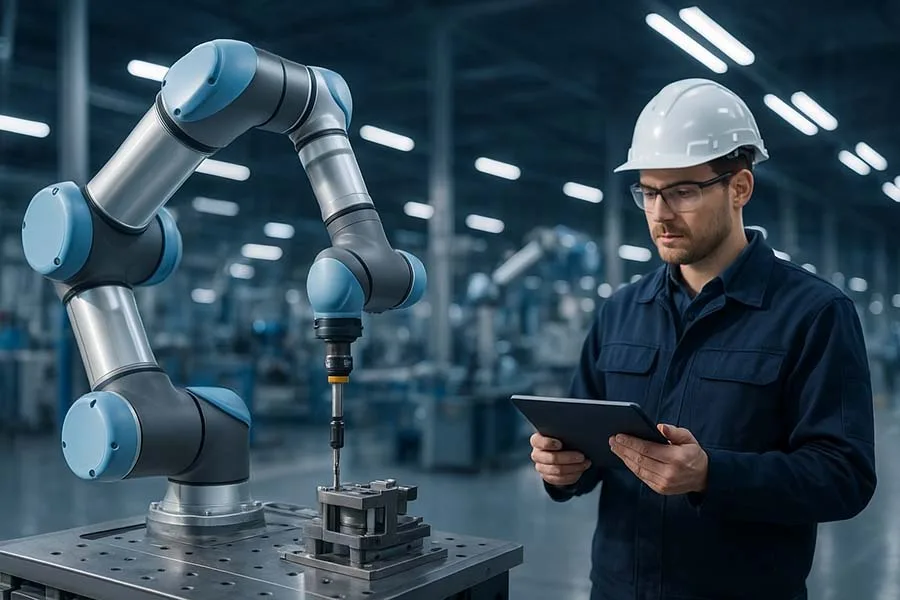Introduction
Industrial robotics has always been a story of innovation. But today, three disruptive trends—Artificial Intelligence (AI), 5G connectivity, and digital twins—are redefining not just how robots work, but how entire factories operate. Together, they represent the technological backbone of Industry 4.0, where real-time intelligence, ultra-fast communication, and virtual replicas make manufacturing smarter and more resilient.
This article explores how these three forces work together, their technical foundations, and the practical benefits manufacturers are already realizing.
1. Artificial Intelligence: Robots That Learn and Adapt
Gone are the days when robots could only follow rigid scripts. AI has given machines the ability to see, decide, and optimize.
Key Applications:
- Computer Vision: Robots can now inspect parts with accuracy rivaling human inspectors.
- Predictive Maintenance: AI algorithms detect anomalies before breakdowns occur.
- Adaptive Assembly: Robots adjust grip, pressure, or speed in real time.
| AI Capability | Benefit in Robotics | Example Application |
|---|---|---|
| Computer Vision | Reduces errors to <0.1% | Automated quality control in automotive plants |
| Reinforcement Learning | Continuous process improvement | Robots fine-tuning pick-and-place speed |
| Natural Language Processing (NLP) | Human-machine collaboration | Voice-commanded robot programming |
2. 5G: The Nervous System of the Smart Factory
A factory full of robots, sensors, and AGVs (Automated Guided Vehicles) demands seamless connectivity. Traditional Wi-Fi networks often fail to provide the required reliability. This is where 5G comes in.
Why 5G Matters:
- Ultra-Low Latency (<1 ms): Critical for real-time control of robots and cobots.
- High Device Density: Supports thousands of sensors and machines per square kilometer.
- Enhanced Reliability: Industrial-grade uptime for mission-critical operations.
Case Example: In Germany, a leading car manufacturer uses 5G to coordinate over 300 AGVs on a single factory floor, ensuring collision-free operations.
3. Digital Twins: The Virtual Blueprint of Reality
Imagine having a virtual replica of your factory—machines, robots, and workflows—all updated in real time. That’s the power of digital twins.
Benefits for Robotics:
- Simulation and Testing: Test new robot configurations virtually before applying them.
- Performance Monitoring: Digital twins continuously track KPIs such as uptime, energy use, and cycle times.
- Faster Innovation: Manufacturers can trial multiple scenarios in days, not months.
Technical Fact: Digital twin adoption can reduce product development cycles by 20–30% and maintenance costs by up to 25%.
4. The Convergence: AI + 5G + Digital Twins
Individually, each technology is transformative. Together, they create a hyperconnected, intelligent manufacturing ecosystem.
Example of Convergence in Action:
- AI-powered robots generate data from operations.
- That data is transmitted instantly via 5G networks.
- A digital twin updates in real time, providing engineers with actionable insights.
- Engineers use those insights to fine-tune processes, which AI robots adapt to immediately.
This loop of data → insight → action is what makes Industry 4.0 factories truly smart.
5. Future Outlook: What’s Next?
- Edge AI: Running AI directly on robots for faster decision-making.
- 5G + Private Networks: Factories owning dedicated, interference-free 5G networks.
- Human Digital Twins: Simulating worker-robot interactions to optimize ergonomics and safety.
By 2030, McKinsey estimates that digital twins and AI-powered robotics could contribute over $1.3 trillion annually to global manufacturing productivity.
Read more about Robotics & Intelligent Automation in Industry
- Robotics & Intelligent Automation in Industry
- Collaborative Robots (Cobots)
- AI & Machine Vision: How Smart Robots See, Think, and Adapt
- Precision Engineering Meets Robotics
- The Economics of Robotics: Cost, ROI, and When to Automate
- Robotics Safety Standards Every Manufacturer Should Know
- Humans and Robots: The Reality of Shop Floor Collaboration
- Mobile Robotics and AGVs: The Silent Workforce of Logistics
- Robotics in Small and Medium Manufacturing
- The Future of Industrial Tools in a Robotic World
- Disruptive Trends: AI, 5G, and Digital Twins in Robotics
Conclusion
AI, 5G, and digital twins are not just buzzwords—they are the new operating system of modern manufacturing. They empower robots to be smarter, factories to be more flexible, and companies to innovate at a pace previously impossible.
For manufacturers, the question is no longer if these technologies will reshape the shop floor—but how fast they can be adopted to stay competitive.





